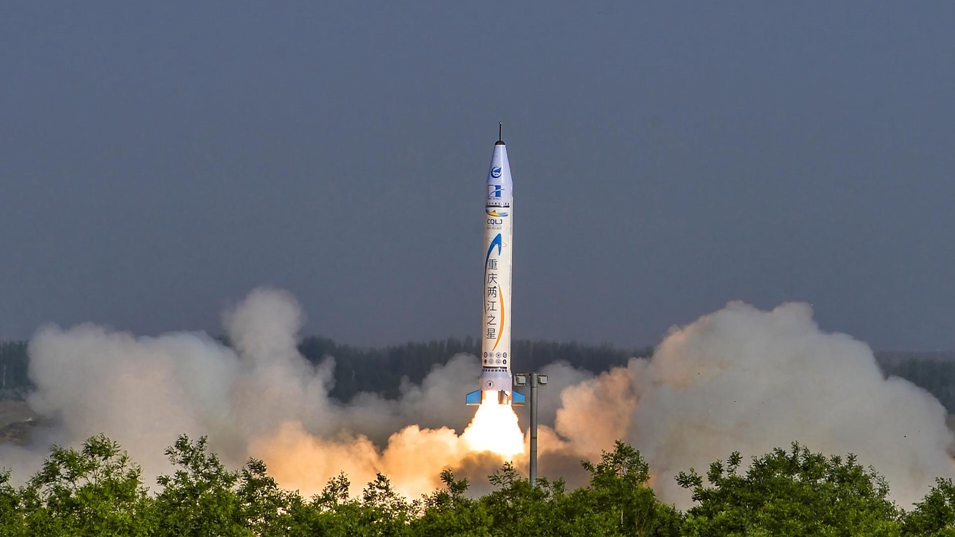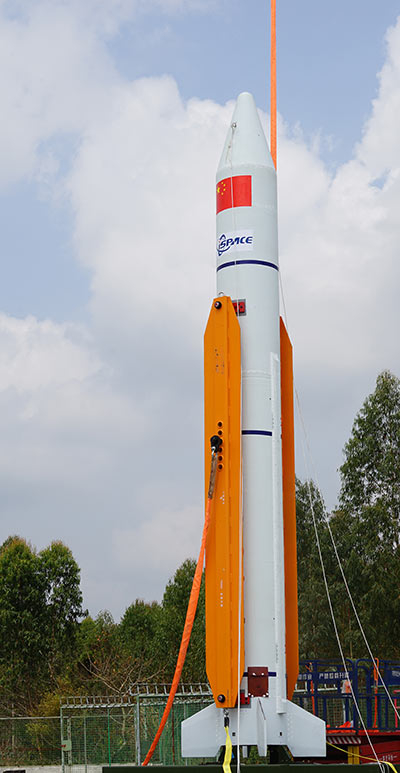
Space
20:50, 16-Jul-2018
Private firms race to build carrier rockets
Updated
20:12, 19-Jul-2018
CGTN

The research and development of carrier rockets is a major sign of a space-faring nation's capability. Such rockets have long been dominated by government-backed giants around the world.
However, in the wake of emerging business opportunities, the United States and China have realized that it is necessary to introduce new players to stimulate innovation and competition and to fill in market gaps left by established contractors.
As an important part of his endeavor to strengthen China's space industry, President Xi Jinping has requested that the long insulated industry should open its doors to private enterprises.
Meanwhile, several government departments have published policies and guidelines that encourage private businesses to take part in space-related businesses.
As a result, nearly 10 private rocket firms have been launched in China over the past three years.
Among them, i-Space and OneSpace Technology, two startups based in Beijing, have taken leading positions, as each has launched a test rocket developed on their own to verify their designs and equipment.
The two have made it clear that they have no intention of grabbing government-funded missions from state-owned space giants, namely China Aerospace Science and Technology Corp and China Aerospace Science and Industry Corp, but aspire to satiate the huge demand in launch service from newly founded satellite companies, most of which also are privately owned.
They are now focused on assembling new prototypes for further tests and striving to develop mass-production models that are expected to fulfill commercial contracts.
Xie Fang, a senior designer at i-Space, said the company plans to lift a Hyperbola-1Z experimental rocket in the coming months at a national space launch center, which he declined to name.
The mission is mainly tasked with demonstrating technologies for the Hyperbola-1, i-Space's first mass-production carrier rocket.
Both the Hyperbola-1Z and Hyperbola-1 will use solid propellants.
Xie said the Hyperbola-1Z will conduct a flight to an altitude of about 150 kilometers before placing a retrievable mini-satellite into orbit.
The mission will mark the first time a privately developed rocket is launched from a national space facility, as opposed to previous launches that used non-space testing fields, he said.

Hyperbola-1S, i-Space's carrier rocket, awaits its launch in April. /China Daily Photo
Hyperbola-1S, i-Space's carrier rocket, awaits its launch in April. /China Daily Photo
Hyperbola-1 will have its debut flight in the first half of 2019, according to Xie.
It will have a diameter of 1.4m, a length of 20m and a liftoff weight of 31 metric tons.
The rocket will be able to transport a 300-kilogram satellite into low-Earth orbit or a 100-kilogram satellite into a sun-synchronous orbit.
He noted that four launches of Hyperbola-1 rockets are scheduled in 2019 to lift clients' satellites.
His company has also begun to design the Hyperbola-3, a larger rocket with nine 15-ton-thrust, liquid-propellant engines, and plans to launch it as early as 2020, Xie said.
In late June, i-Space announced it has received an investment of 600 million yuan (90 million US dollars) from more than 10 domestic funds and venture capital.
OneSpace, headquartered near i-Space, is probably the most talked-about firm in the media compared to its peers, thanks to its high-profile founder Shu Chang.
It has been preparing for the first mission of its OS-M1, a 19m solid-propellant rocket which OneSpace has pinned high hopes on for attracting launch contracts for small satellites.
The company has garnered a total investment of nearly 500 million yuan from domestic agencies and plans for an annual manufacturing capacity of around 50 rockets in 2020.
In addition to the two that have had launches, another heavyweight player, Land-Space, which is also a space industry startup in Beijing, has published a plan to build "the largest and most powerful carrier rocket designed and built by a Chinese private rocket company."
It expects to make its debut flight in 2020.
The company said in a statement sent to China Daily that the design of the ZQ 2, a 48.8m liquid-propellant rocket, was completed in June and construction of the rocket's key components has begun.
It said the rocket will go through a series of ground tests before the end of 2019 and if everything goes well in accordance with its schedule, ZQ 2 will conduct its maiden flight in 2020.
The ZQ 2 will have a diameter of 3.35m, the same as most of China's Long March-series rockets, and a weight of 216 tons.
With a liftoff mass of 268 tons, it will be capable of placing a two-ton payload into a sun-synchronous orbit 500 kilometers above the Earth or a four-ton spacecraft to a low-Earth orbit with an altitude of 200km.
Zhang Changwu, founder and CEO of LandSpace, said that upon its completion, the ZQ 2 will become the biggest and mightiest carrier rocket that has been developed by a Chinese private enterprise.
"The participation of private firms will substantially reduce the launch cost and help to boost the commercialization of the entire space industry," said Wu Zhijian, director-general of China Space Foundation.
He said private players with creativity and technology are crucial to achieving the nation's goal of building a strong space power.
(Top image: OneSpace launches China's first private rocket on May 17, 2018. /VCG Photo)
Source(s): China Daily

SITEMAP
Copyright © 2018 CGTN. Beijing ICP prepared NO.16065310-3
Copyright © 2018 CGTN. Beijing ICP prepared NO.16065310-3